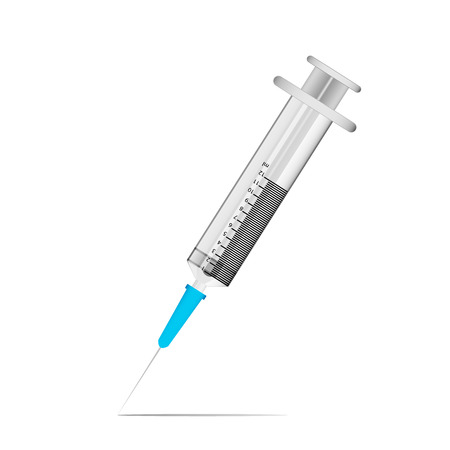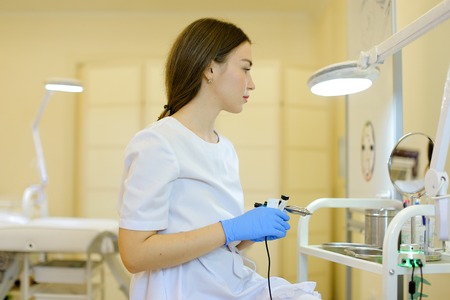Understanding the Importance of Aftercare
Aesthetic enhancements are an investment in your confidence and well-being, but the journey to lasting results does not end when you leave the clinic. In the UK, aftercare is regarded as a cornerstone of best practice in aesthetic medicine. By committing to diligent aftercare, you are taking proactive steps to safeguard your results and minimise potential complications. This phase is not merely about healing; it is about ensuring that the benefits of your chosen treatment are protected for as long as possible. British aesthetic practitioners consistently emphasise the importance of tailored aftercare plans, recognising that each individual’s skin, lifestyle, and goals are unique. Following expert advice helps maintain both the appearance and health of treated areas, supporting optimal outcomes that align with your expectations. Ultimately, understanding and adhering to recommended aftercare protocols demonstrates a responsible approach—valued within UK aesthetics—for achieving and preserving natural-looking enhancements.
Immediate Post-Treatment Guidance
After undergoing any aesthetic enhancement, the immediate hours and days following your treatment are crucial for ensuring optimal results and minimising complications. At English clinics, practitioners adhere to stringent aftercare standards designed to support your recovery and protect your investment in your appearance. The exact steps will vary depending on the procedure, but below is a practical breakdown of common post-treatment recommendations tailored to typical treatments such as injectables (Botox, dermal fillers), laser therapies, and skin resurfacing.
| Treatment Type | Immediate Care Steps | Clinic-Specific Tips |
|---|---|---|
| Injectables (Botox, Fillers) |
Avoid touching or massaging treated areas for at least 6 hours. Remain upright for 4 hours post-procedure. Refrain from strenuous exercise and alcohol for 24 hours. |
English clinics often advise avoiding hot drinks if lips are treated, to prevent swelling. You may be given a cold pack to reduce discomfort—use as instructed. |
| Laser Treatments (Hair Removal, Skin Rejuvenation) |
Avoid sun exposure and use high-SPF sunscreen. Do not apply perfumed products for 48 hours. Keep the area cool and clean; avoid hot baths or saunas. |
Clinics in the UK typically provide written product guidance for home use. If redness persists beyond 48 hours, contact your practitioner promptly. |
| Chemical Peels/Skin Resurfacing | Use only gentle cleansers as recommended. Avoid exfoliating agents until healing is complete. Apply moisturiser frequently to combat dryness. |
Your clinic will usually supply a take-home aftercare kit. Bespoke advice is given on when to resume normal skincare routines. |
General Advice:
- Always follow your practitioners specific instructions—this is essential in British clinics where protocols are tailored to both the patient and the procedure.
- If you experience unexpected side effects such as excessive swelling, severe pain, or signs of infection, seek professional advice immediately rather than relying solely on over-the-counter remedies.
- Keen attention to these immediate steps sets the foundation for long-term satisfaction with your aesthetic results.

3. Daily Skin Maintenance
Establishing a thoughtful daily skincare and lifestyle routine is essential for preserving the results of your aesthetic enhancements, especially in the context of the UKs distinct climate. The British weather—characterised by frequent rain, cool temperatures, and varying humidity—requires tailored skin care strategies to keep your complexion healthy and your treatment results long-lasting.
Cleansing for British Conditions
Begin your day and end your evening with a gentle cleanser suited to your skin type. In the UK, pollution and damp conditions can contribute to clogged pores and dullness. Opt for a non-stripping, hydrating cleanser that removes impurities while maintaining the skins natural barrier. For urban dwellers, consider incorporating a double cleanse in the evenings to tackle both environmental pollutants and any residual makeup.
Sun Protection Year-Round
Despite the often overcast skies, UV rays remain potent throughout the year in Britain. Daily use of broad-spectrum SPF 30 or higher is critical—even when it’s cloudy or raining. This habit not only protects against premature ageing but also helps maintain even tone and texture after treatments such as chemical peels or laser resurfacing. Don’t forget commonly missed areas like the ears, neck, and back of hands, which are equally exposed during outdoor activities.
Hydration Suited to Humid Climates
The UK’s high humidity can confuse hydration needs; however, consistent moisturising remains vital. Choose lightweight, non-comedogenic moisturisers during warmer months to avoid congestion, and richer creams in colder seasons to combat wind-induced dryness. Look for ingredients such as hyaluronic acid for water retention and ceramides for barrier repair. Additionally, keep indoor heating in check during winter as it can dehydrate skin—consider using a humidifier at home if necessary.
Lifestyle Choices Supporting Skin Health
Your routine should extend beyond topical products. Staying hydrated by drinking ample water throughout the day supports overall skin elasticity and resilience. Incorporate antioxidant-rich foods—like berries, leafy greens, and oily fish—into your diet to protect against environmental stressors common in urban UK settings. Regular moderate exercise can also enhance circulation and promote a healthy glow.
Consistency is Key
The effectiveness of your aftercare hinges on consistency. By committing to these daily practices tailored for the UK climate, you’ll significantly improve the longevity of your aesthetic enhancements while supporting overall skin vitality.
4. Managing Expectations and Monitoring Progress
After undergoing an aesthetic enhancement, its important to establish realistic expectations regarding the timeline for visible results and understand how to monitor your progress effectively. Each treatment, whether it’s dermal fillers, laser therapy, or chemical peels, comes with its own recovery process and expected outcomes. Below, we’ve outlined typical timeframes for common procedures in the UK, as well as guidance on when patience is key and when to seek professional advice during your aftercare journey.
Realistic Timelines for Visible Results
| Treatment Type | Expected Timeframe for Results | When to Book a Follow-Up |
|---|---|---|
| Dermal Fillers | Immediate improvement; optimal results in 1-2 weeks as swelling subsides | Review at 2 weeks post-procedure |
| Laser Skin Rejuvenation | Initial redness for several days; visible improvements in 2-4 weeks | Follow-up after 4 weeks |
| Chemical Peels | Peeling may last up to 7 days; clearer skin apparent within 10-14 days | Check-in at 2 weeks post-treatment |
| Botulinum Toxin (Botox) | Smoother appearance within 3-5 days; full effect in up to 2 weeks | Assessment at 2-3 weeks post-injection |
The Importance of Patience in Aftercare
Aesthetic enhancements rarely deliver their final outcome overnight. It is entirely normal for swelling, redness, or minor bruising to persist for several days post-procedure. British clinics typically advise patients to refrain from judging results too quickly, as full healing and settling can take up to a fortnight or longer depending on individual response. If you’re uncertain about your progress but have no alarming symptoms, give yourself time before seeking further intervention.
When Should You Seek Professional Advice?
While patience is essential, there are instances where prompt follow-up with your practitioner or clinic is warranted. Here are some signs that merit immediate attention:
- Persistent pain or severe discomfort beyond the expected recovery window
- Signs of infection such as increasing redness, warmth, swelling, or discharge at the site
- Unusual lumps or asymmetry that do not improve over two weeks
- Sudden changes in vision or severe headaches (particularly after facial injectables)
- An allergic reaction such as hives or difficulty breathing (seek emergency care if this occurs)
Navigating British Follow-Up Care Protocols
In the UK, routine follow-up appointments—sometimes called “review clinics” or “post-procedure check-ins”—are standard practice. Make sure to attend these sessions even if you feel satisfied with your results, as they offer an opportunity to address any concerns early and ensure long-term satisfaction with your enhancement. Most reputable practitioners will provide clear written guidance on when to return or how to get in touch between scheduled visits should you have questions.
5. Common Pitfalls and How to Avoid Them
In the UK, several recurring mistakes can jeopardise the longevity of aesthetic enhancements, often turning promising results into disappointing outcomes. Recognising these pitfalls is crucial for anyone keen on preserving their investment and enjoying lasting benefits.
Neglecting Professional Aftercare Guidance
A common misstep is disregarding the aftercare instructions provided by your practitioner. Whether its skipping follow-up appointments or ignoring advice on product use, this oversight can severely undermine your results. Always prioritise professional guidance, as tailored advice is designed with both your safety and optimal outcome in mind.
Improper Sun Protection
Many clients underestimate the impact of sun exposure on newly enhanced skin. In the British climate, it’s easy to forget sunscreen, but even overcast days allow UV rays to cause damage. Consistently applying a broad-spectrum SPF—even during cloudy months—is fundamental for protecting treated areas and preventing premature fading or pigmentation changes.
Overuse of Active Skincare Ingredients
The temptation to expedite results with potent skincare products—such as retinol or acids—is prevalent. However, overusing these actives, especially soon after procedures, can irritate sensitive skin and compromise healing. Stick to a gentle routine as advised by your practitioner and gradually reintroduce actives only when cleared to do so.
Lifestyle Factors: Smoking and Excess Alcohol
Smoking and excessive alcohol consumption are often underestimated contributors to poor long-term outcomes. Both habits impair circulation and can accelerate ageing, reducing the efficacy of treatments like fillers or skin rejuvenation procedures. Consider these lifestyle adjustments as investments in both your health and your aesthetic results.
DIY Touch-Ups and Unvetted Products
In an era of online tutorials and easily accessible at-home kits, some individuals attempt DIY touch-ups or purchase unregulated products. This practice is not only unsafe but can also lead to adverse reactions or uneven results. Always seek qualified professionals for any adjustments or repeat treatments.
Key Takeaway
By remaining vigilant against these frequent UK-specific mistakes and adhering strictly to professional aftercare recommendations, you’ll maximise the longevity of your enhancements while ensuring both safety and satisfaction.
6. When to Seek Professional Support
While most aesthetic enhancements settle smoothly with proper aftercare, it’s crucial to recognise when things may not be progressing as expected. Understanding the signs of complications and knowing when to consult a professional can make all the difference in protecting your results.
Identifying Signs of Concern
Some mild swelling, redness or tenderness is normal in the initial days after treatment. However, if you experience any of the following symptoms, it’s important to take them seriously:
- Persistent or worsening pain beyond the first few days
- Noticeable lumps, unevenness or asymmetry that does not improve
- Unusual discharge, bleeding or pus at the treated area
- High temperature or fever alongside localised swelling
- Sudden changes in skin colour (such as blanching or darkening)
The Value of Early Intervention
If you notice any of these issues, do not attempt to treat them yourself. Early intervention by a qualified practitioner is vital and can often prevent more serious complications. Most reputable clinics in the UK offer follow-up appointments and are happy to answer post-treatment concerns.
Accessing Local Resources and NHS Services
Your first point of contact should be your original practitioner, who will have detailed knowledge of your procedure and medical history. If they are unavailable or you feel it is an emergency—such as a severe allergic reaction or signs of infection—contact NHS 111 for advice or visit your nearest A&E department. The NHS provides guidance on managing complications from cosmetic procedures, and many areas have dedicated clinics specialising in dermatology and wound care.
Building a Support Network
Maintaining open communication with your practitioner and being aware of local support options empowers you to act swiftly if problems arise. Remember, seeking professional help early ensures your enhancements remain safe and effective for the long term.


